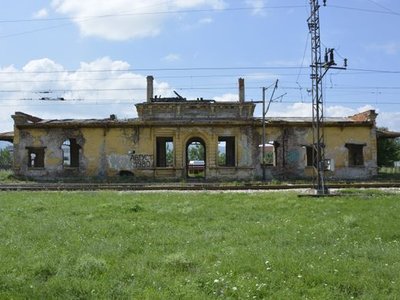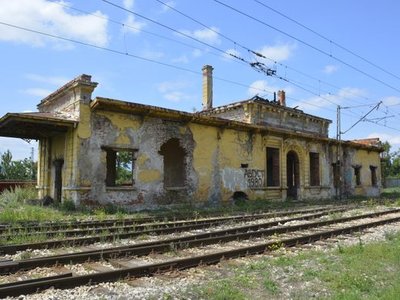Royal Station Kazichene


Once known by locals as
the Royal Station, the now-derelict Kazichene train station in western
Bulgaria
is probably the only freely accessible relic of the Bulgarian royal family. Today, the station’s advanced state of disrepair acts as a fitting allegory for its former owners.
With the signing of the Treaty of San Stegano in 1878, Russia and the Ottoman Empire laid out plans to establish an autonomous Bulgarian principality. After a few unsuccessful political experiments, the young Bulgarian state chose Ferdinand, the heir of the German noble family Saxe-Coburg-Gotha, as the country’s first tsar.
Ferdinand I of Bulgaria, along with his son Boris and grandson Simeon, ruled over Bulgaria until World War II. In 1944, a Soviet-backed coup d’etat overthrew the family, who subsequently fled to Spain.
During the royal family’s rule, the new tsars built themselves a myriad of palaces, villas, retreats, and other structures, to flaunt their status as rulers and partake in what the rapidly developing country had to offer.
The Kazichene royal train station was built from 1906 to 1911 as the gateway for the new
Vrana palace
(literally meaning “crow”), finished a few years later, the closest royal residence outside the capital. On one side special trains brought the royal family and distinguished guests from all over Europe, and, on the other, a small-gauge private railway transported the family and guests to the palace in less than 10 minutes. Legend has it that Tsar Boris even drove the small locomotive himself.
After World War II, the state seized all royal property. The station was stripped of any insignia and was effectively abandoned, although it wasn’t until the 1990s that it became completely unattended.
Today, the royal train station has been left to fall further into ruin while the Vrana palace has become a popular tourist destination. Today, the palace is easily accessible, a short drive from the city center, making the convoluted transport scheme an oddity of the past.